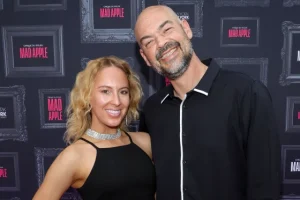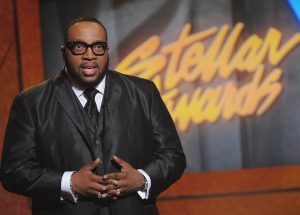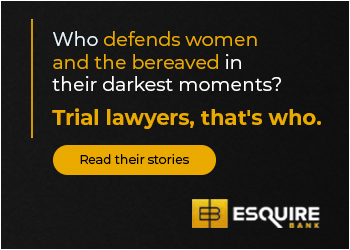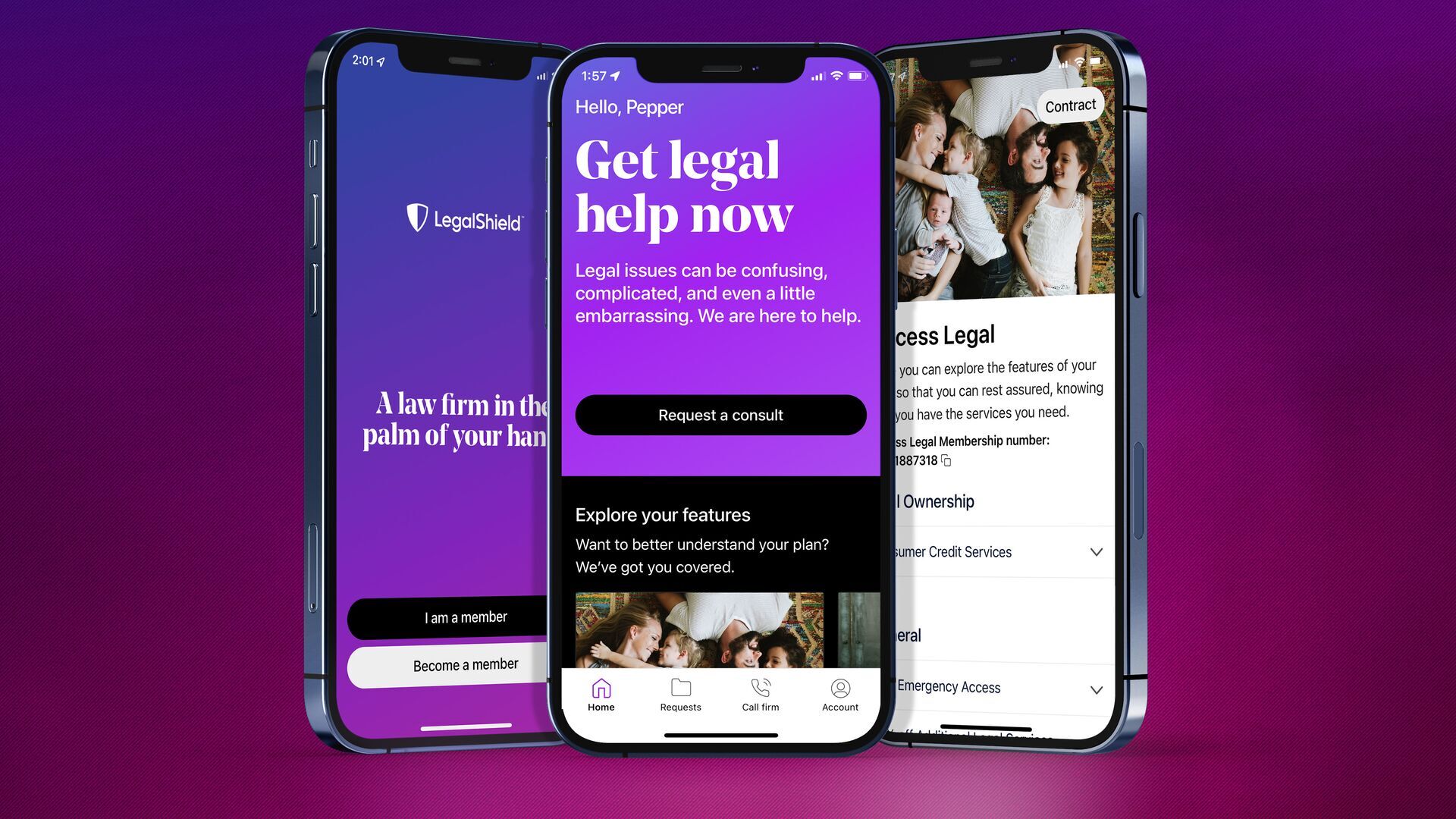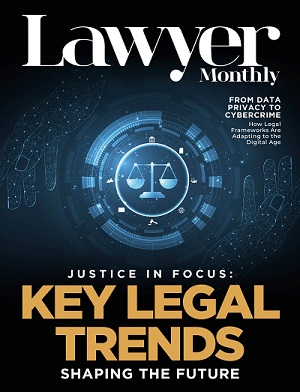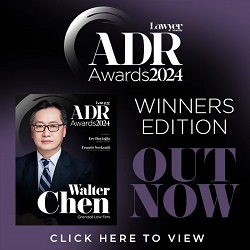Bridging Law and Business for Success: Stefan's Innovative Approach at T I Law Group
In this exclusive interview with Lawyer Monthly, Stefan Thomas, founding director Stefan Thomas of the Thomas Ingram Law Group (T I Law Group), shares his insights on the evolving role of legal counsel in today’s dynamic business landscape. As a multifaceted attorney and business strategist, Stefan Thomas discusses his approach to bridging law and business, addressing the unique challenges faced by entrepreneurs and corporate leaders in Columbus, OH. Through his innovative strategies, he aims to empower clients to navigate complex legal landscapes while fostering sustainable growth and long-term success. Join us as we explore Stefan's journey and the invaluable contributions he makes to his clients and the broader business community.
Stefan Thomas (T I Law Group) - Versatility
What inspired you to take on the role of both legal advisor and business strategist for your clients, and how do you balance these dual responsibilities?
First, it’s been an honor to support clients in these versatile roles. Honestly, my affection for learning led me here. I spend a lot of time reading case studies and literature for the purposes of learning and intentionality. I have always liked business; in law school, my track focused on business. So, when an opportunity arose to formally diversify and sharpen my business skillset, I felt the time was right. I considered how I was engaging with clients, boards on which I sit, and volunteer functions, and I noticed I was often flowing beyond law. I was engaging more heavily in business considerations, operational efficiencies, target attainment, and the like. Functioning in that manner was invigorating.
Additionally, I wanted to be more intentional about how I could engage in the business ecosystem. Expanding capacity to enhance experiences is an important factor in growth along any path. Identifying an innate ability within myself, being open to providing value, and taking the initiative to build on that was a natural course of action for me—not only to learn for myself but to support current clients and hopefully create space and opportunity for new clients, ventures, and experiences.
I balance these responsibilities logistically by keeping the legal advising separate from strategy consulting. The two run through different offices, with different offerings and models. Attention to volume and standard operating procedures helps maintain high quality for both. The firm is a full team, equipped with skill sets to ensure our client experience is consistent from front to end. While strategy consulting is more intimate, allowing for direct engagement on a limited basis with simplified processes, I keep open the transference of knowledge and intuitive spirit from the strategy work, which I believe allows me to offer more comprehensive support to legal clients.
Shifting Climate
What are the most common legal challenges faced by entrepreneurs and startups in Columbus, and how do you help them navigate these issues?
I can’t say that I know all the common challenges, but I can share observations of a few recent consistent challenges coming through our firm: optimal business structure; economic development considerations; and financing and capital access.
When I speak about business structure in this article, I include formation, workforce, and operational models. Clients are determining, during this shifting climate, which form, or forms, is most advantageous for their current sustainability, long-term, or exit strategies. Considerations are intensified by funding determinations, succession planning, and the fight for talent.
Now that Ohio, especially the central region, has become a hotbed of business and population growth, we find our office dealing more with economic development considerations. This includes considerations such as determining where to hold or sell real property, when, what, and where to develop commercial ventures, and how to protect assets situated in areas targeted for renewal and development amid competing socio-economic realities and aspirations.
NFPs, public entities, investors, and investor groups are bringing more considerations around accessing, securing, and making available capital. As the landscape continues to change, so do interests. Navigating these interests requires a delicate balance of knowledge, access, motivations, compliance, coupled with public perception, political uncertainty, and a vacillating marketplace.
Corporate Governance
How do you work with governing boards to ensure that both legal and business objectives align smoothly within an organization?
Working with boards is enjoyable because it is multifaceted. You get the chance to engage and balance multiple personalities, ambitions, understandings, and both personal and corporate targets. Considering the matter at hand while balancing those considerations and attempting to bring about unified action feels more like an art than a transaction.
At a high level, my work begins with understanding the business objectives. If the organization has a defined organizational strategy or set of business objectives, I can undertake diligence to understand the organization.
Once that understanding is established, the next step is to grasp board dynamics, consensus, individual concerns, and decision-making processes. Reconciling these understandings with the strategy or objectives allows me to identify various things such as legal needs, methods for establishing alignment, and appropriate deliverables.
I work with the laws, regulations, and authorities that govern the organization and the board to ensure constant monitoring of organizational activity and board actions. I manage within business relationships to ensure obligations are fulfilled by all parties, while also tracking best practices to support relevant actions and policy development. Together, these elements support alignment.
Sustainability
Can you share an example where you identified a critical business issue for a client and developed a successful legal solution?
Certainly. I have learned that what is considered critical is relative. I see issues that go unnoticed but that I think a business or leader will find crippling, and issues that cause panic but do not necessarily have a long-term detriment. We have clients who self-identify issues and others who, through our collaboration, come to realize them.
An NFP client recognized the potential that certain activities could impact its longevity. We spent extensive time researching, developing, and educating on models and creative structures that offered compliance, distinction, and the desired sustainability for the NFP. Spending time with leaders to determine what mattered most and their long-term goals allowed leadership and our team to collaboratively identify and develop the optimal structure compromised of multiple entities, a suite of agreements and auxiliary documents, and clarified practices.
A for-profit client had an incredible vision for helping other firms achieve preferred financing events, where typically they drop off. This client had clearly defined desires and returns. After sessions with the client, we identified areas of opportunity within the envisioned structure and stepped back to identify potentially more suitable structures and create a framework that would protect the client, foster healthy long-term relationships with other firms, meet the goals of the client, and bring the firms to a mvp and further along in their finance lifecycle.
Legal Risks and Balance
What strategies do you employ to keep C-suite executives informed of potential legal risks without overwhelming them with technical details?
Great question. First, I maintain a constant diverse stream of real-time learnings and historical/static learnings. With real-time learnings, I keep a pulse on industries, markets, and geographies. Historical and static learnings help develop depth of concept, allowing me to study past happenings to guide present and future considerations, recommendations, and actions.
Second, I stay attuned to what is relevant to the executive or leader and what might be inconspicuously relevant. For those willing, we openly discuss concerns of the company and the leader, which allows me to note what matters and what is a priority. I also observe. When on-site, in meetings, or reviewing correspondence, I listen for the unspoken. By tracking industry and market trends, I identify unspoken matters that could have positive or negative impacts and track them to determine the optimal time to share or engage.
Third, I determine appropriate timing, frequency, and output. As one client CEO says in leadership meetings, not all things are a 5-alarm fire. Balancing what I think is important with what truly matters to leadership and what has a real impact on the organization is critical to the information being received. Translating information into a consumable form specific to the receiving executive is equally important; this can range from a general report to a late-night call. Some may need a long-form memo, while others may only require a bulleted summary.
Regulatory Compliance
How has the role of legal counsel for businesses evolved, especially with the increasing importance of compliance and regulatory issues?
I’m sure it varies for each practitioner. For me, the role has evolved from being a responder to an anticipator. Going back to your earlier question about keeping C-suite informed, I carry with me what matters to our clients or what is happening in relevant industries that could impact them. I then attempt to anticipate the issue and prepare our clients and team to either be proactive or effectively responsive. I also consider the temperament and bandwidth of our clients to ensure we handle matters with appropriate care and make interactions as efficient and actionable as possible.
Additionally, the role has evolved from being a doer to a collaborative creator. Initially, requests were for direct support on specific projects. Now, calls are expansive, encompassing evaluations of pending C-suite members for corporations, support on business decisions impacting company strategy, collaboration with PR professionals on corporate matters and crisis management, and ideation around workplace culture. This evolved role requires significant time spent digging into materials, studies, literature, and governmental actions, all aimed at providing counsel focused on business and compliance.
Business Development
What are the key factors you consider when helping entrepreneurs scale their businesses, particularly from a legal and governance perspective?
This is an interesting question. When I use "scale," I generally refer to the ability to increase revenue while maintaining or reducing input. For me, I continuously work to keep scaling distinct from other tools such as strategy, operational efficiency, or even economies of scale. Scaling is intentional work. A principle that stands out to me comes from Sutton and Rao: “Effective scaling depends on believing and living a shared mindset throughout your group, division, or organization. Scaling is analogous to a ground war rather than an air war because developing, spreading, and updating a mindset requires relentless diligence. It requires stating the beliefs and living the behavior, and then doing so again and again. These shared convictions reduce confusion, disagreements, and unnecessary dead ends—and diminish the chances that excellence will fade as your footprint expands.”
With that in mind, I believe supporting scaling from a legal or compliance perspective involves asking questions followed by development based on client responses. In my role as outside counsel, I don’t look for specific factors to scale a business or identify potential clients. Every business looks and functions differently, including if, when, and how to scale. At our firm, we leverage our knowledge and experience to contribute to our clients' scaling considerations when the opportunity arises.
It can be difficult to determine scalability based on initial or limited interactions with clients. However, some key factors stand out: the market in which the client operates; the product or service being offered; the problem being solved; demand; and the operational efficiencies that exist, don’t exist, are developing, or are being ignored. The mindset of leadership also plays a crucial role. Questions that I may engage in may look like the following:
Is there room in the market? Is the client an incumbent or a new entrant? Is the client creating a niche? Is the market flourishing? Has a target within the market been identified?
Does the product or service have longevity? Do barriers to entry make it easier to compete? Are existing barriers weakening market position? How can we prepare now to defend or advance if barriers come down? Can we leverage compliance to more fully energize ideation and development?
Is there a problem that is being solved? Has a problem been considered at all? Is the problem being solved the right problem to solve? Have they discovered the job to be done? Has this problem, job, and the solve been effectively communicated, trained on, bought in?
Is the product or service desired? For how long? Can the product or service be fortified, diversified, or further differentiated?
Is there demand? Is there enough demand? Can demand be created?
Does OE exist? Is the OE developed based on sound considerations? Is there any correlation between the OE and the desired growth? Does the OE positively impact revenue?
Whether the entrepreneur and one FTE or a suite of business leaders and hundreds of FTEs, is the mindset across all in sync? Do people understand their significance to the company or organization? Is there a people strategy? Is the people strategy effective? Are guardrails clear?
I believe various factors exist requiring deep analysis. Determining what is relevant for each is critical to scaling the specific business in question.
Good Relations
How do you approach long-term partnerships with clients, and what makes your relationship with them different from a more transactional legal service?
Interestingly, we approach all relationships with the same intentionality. I view each as a valuable exchange, with value defined per relationship. We discussed strategy earlier; I focus on strategy at our firm. I track data, market activity, and competitive forces to continually uncover and capture our emergent strategy. Each partnership has the potential for long-term impact, directly or indirectly.
We dedicate time to refining components of strategy execution to continuously zero in on our target partnerships and their cultivation. We refer to all our client relationships as client-partnerships to emphasize the importance of nurturing these connections in our competitive legal landscape.
Differentiation is key to success in the legal field. However, to differentiate, one must understand their own strategy to avoid replicating competitors’ actions. The legal market is facing new competition from AI, online legal services, and non-legal ownership, prompting incumbents to explore work that wasn’t previously considered. This reinforces the need for a sound strategy to ensure resources are effectively deployed to attain and maintain targeted partnerships.
About Stefan Thomas
Stefan is a founding director at Thomas Ingram Law Group, affectionately called T I Law Group. Founded in 2016 alongside Attorney Ashley Ingram, T I Law Group is a Black-owned transactional legal services firm situated in Columbus, OH. A Columbus native, Stefan converges his roles as an attorney, business strategist, author, and singer-songwriter to advise C-suite executives, business and political leaders, entrepreneurs, artists, athletes, and personalities. Focusing on corporate structuring and business transactions, commercial real estate, education, and arts & entertainment, clients have described his support as “invaluable,” noting it is provided with “generous care and magnificent professionalism.” When describing the partnership with Stefan and T I Law Group, executives of multimillion-dollar enterprises share, “They always present options for me to choose from so that decisions are made in a thoughtful and comprehensive manner,” and “allow me to focus on the business.” Notable in 2023/2024, Stefan has supported corporate clients with acquiring commercial property throughout Ohio, assisted former OSU and NFL players with business ventures, protection, and expansion, and provided counsel on music licensing deals involving recording and platinum-status musical artists.
Contact
Stefan T. E. Thomas
Attorney | Thomas Ingram Law Group
98 Hamilton Park, Columbus, Ohio 43203
Tel: 614.340.9570 | Email: iamstefan@tilawgroup.com
www.tilawgroup.com








